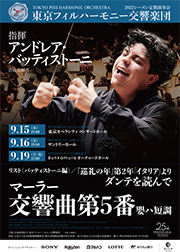INFORMATION DETAIL
Update on August 8, 2022 (Mon)


Franz Liszt (1811-1886)

Gustav Mahler (1860-1911)
LISZT and MAHLER – what an extraordinary combination for a concert program! The lives of these two composers spanned exactly a century: Liszt was born in 1811, Mahler died in 1911. Within those hundred years lies a large percentage of the music we hear on concert programs today, and the two Andrea Battistoni has chosen make a perfect pair. Not only are they complementary in their musical material, but both come from composers whose lives were biographers’ dreams.

The Great Comet of 1811, as sketched
by William Henry Smyth
Here’s how one book about Liszt begins: “In the year of the Great Comet of 1811, an earthly star was born. So brightly did the comet burn that night that the local gypsies took it to be an omen of good fortune, and foretold a dazzling future for the newborn child.” And here’s how Leonard Bernstein described Mahler’s music: “He took all the basic elements of German music – and drove them to their ultimate limits. He turned rests into shuddering silences; upbeats into volcanic preparations as for a death blow; Luftpausen became gasps of shock or terrified suspense; accents grew into titanic stresses. – Mahler’s marches are like heart attacks, his chorales like all Christendom gone mad.”
Obviously, both men were larger-than-life figures, complex and fascinating, exuding magnetism and an aura of boundless energy and determination. The spirit of the Romantic age – unabashed sentimentality, flamboyant virtuosity, brilliant colors, and glorified individualism – is nowhere more characteristically portrayed than in the music of these two composers.

Franz Liszt Fantasizing at the Piano (1840),
by Josef Franz Danhauser

Curicature drawing satirising the
conducting style of Gustav Mahler
("Ein hypermoderner Dirigent"
by Hans Schließmann)
Liszt and Mahler were far more than just composers. Liszt was one of the nineteenth-century’s foremost virtuoso pianists, traveling about Europe with “knock-‘em-dead” programs that left audiences gasping and bewildered. He was also a conductor, a promoter of both new music and old (his hundreds of piano transcriptions helped dozens of composers become household names in an age when learning music mostly meant playing it yourself.)

Der Kuss
by Gustav Klimt
Österreichische Galerie Belvedere

Andrea Battistoni, chief conductor
of the Tokyo Philharmonic
ⒸSatoshi Aoyagi
Mahler too was a conductor; in fact, he was far better known in his time for his career on the podiums of the Budapest Opera, Vienna Opera, Metropolitan Opera, and New York Philharmonic among others, than as a composer. He was feared as one of the foremost tyrants of the podium, demanding standards that were all but unknown at the time. Interestingly enough, even though both men conducted extensively in the opera house, neither composed an opera himself. (Liszt’s one-act "Don Sanche," written at the age of fourteen, hardly counts.) In the music of both composers, the beatific and the diabolical, the serene and the tempestuous, the noble and the vulgar, the stately and the restless existed side by side, often within the same composition. Such is the music Andrea Battistoni has chosen for this program.
"Après une lecture du Dante: Fantasia quasi sonata," or the "Dante Sonata" for short, is a fifteen-minute composition by a great musical illustrator. Here, Liszt depicts in sound the visions conjured up after reading a passage from Dante’s "Inferno": the Gates of Hell opening before us, the torments endured by the souls of those condemned to spend their afterlife there, the anguish, misery, and horror of the place. Nevertheless, midway through there is an interlude of quiet repose, and at the end there a brief vision of Paradise representative of the stark contrasts prevalent in Liszt’s music. Liszt wrote the "Dante Sonata" for piano alone. Conductor Andrea Battistoni has orchestrated the work in a dazzling array of colors such as one might have encountered in orchestrations of the early twentieth century by men like Respighi, Ravel, or Stokowski.
How similar is Mahler’s Fifth Symphony, particularly in its kaleidoscopic orchestration! Mahler did not expect us to imagine visions from the Inferno, but it is not difficult for many listeners to envisage such a place in some of the wildly impassioned, almost maniacal passages in the symphony’s first and second movements. Contrast comes in the third movement with its totally life-affirming music, in the fourth as a beatific interlude, and in the fifth as a triumphant conclusion.
In Liszt’s work the world of grief and death accompanies the listener to the end, but in Mahler’s symphony the metamorphosis from grief and death to joy and life is complete.

Portrait of Dante
by Sandro Botticelli
Private collection

La Carte de l'Enfer
by Sandro Botticelli
Vatican Library
Robert Markow

Formerly a horn player in the Montreal Symphony, Robert Markow now writes program notes for that orchestra and for many other musical organizations. He taught at Montreal’s McGill University for many years, has led music tours to several countries, and has written for numerous leading classical music journals.
September Subscription Concerts
Sep. 15, Thu 19:00 start (18:15 open)
Tokyo Opera City (Concert Hall)
Sep. 16, Fri 19:00 start (18:15 open)
Suntory Hall
Sep. 19, Mon/Holiday 15:00 start (14:15 open)
Bunkamura Orchard Hall
Conductor: Andrea Battistoni (Chief Conductor)
Liszt, orch. Battistoni: Après une lecture de Dante, from Années de Pèlerinage: Second Year "Italie"
Mahler: Symphony No. 5












![BUY TPO TICKETS [03-5353-9522] Business hours: 10:00~18:00 Regular holiday: Sat・Sun・Holiday](../../img/common_en/bnr_inquiry2.png)
